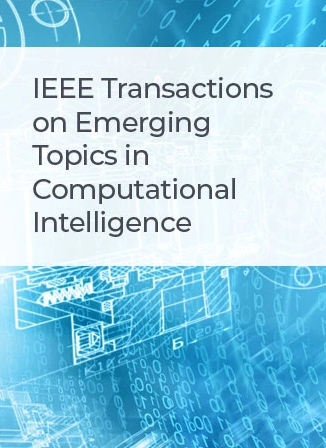SG-GAN: Fine Stereoscopic-Aware Generation for 3D Brain Point Cloud Up-Sampling From a Single Image
IF 5.3
3区 计算机科学
Q1 COMPUTER SCIENCE, ARTIFICIAL INTELLIGENCE
IEEE Transactions on Emerging Topics in Computational Intelligence
Pub Date : 2025-04-21
DOI:10.1109/TETCI.2025.3558447
引用次数: 0
Abstract
In minimally-invasive brain surgeries with indirect and narrow operating environments, 3D brain reconstruction is crucial. However, as requirements of accuracy for some new minimally-invasive surgeries (such as brain-computer interface surgery) are higher and higher, the outputs of conventional 3D reconstruction, such as point cloud (PC), are facing the challenges that sample points are too sparse and the precision is insufficient. On the other hand, there is a scarcity of high-density point cloud datasets, which makes it challenging to train models for direct reconstruction of high-density brain point clouds. In this work, a novel model named stereoscopic-aware graph generative adversarial network (SG-GAN) with two stages is proposed to generate fine high-density PC conditioned on a single image. The Stage-I GAN sketches the primitive shape and basic structure of the organ based on the given image, yielding Stage-I point clouds. The Stage-II GAN takes the results from Stage-I and generates high-density point clouds with detailed features. The Stage-II GAN is capable of correcting defects and restoring the detailed features of the region of interest (ROI) through the up-sampling process. Furthermore, a parameter-free-attention-based free-transforming module is developed to learn the efficient features of input, while upholding a promising performance. Comparing with the existing methods, the SG-GAN model shows superior performance in terms of visual quality, objective measurements, and performance in classification, as demonstrated by comprehensive results measured by several evaluation metrics including PC-to-PC error and Chamfer distance.SG-GAN:从单幅图像上采样3D脑点云的精细立体感知生成
在间接狭窄手术环境下的微创颅脑手术中,三维脑重建是至关重要的。然而,随着一些新型微创手术(如脑机接口手术)对精度的要求越来越高,点云(PC)等传统三维重建的输出面临着样本点过于稀疏、精度不足的挑战。另一方面,高密度点云数据集的稀缺,给直接重建高密度脑点云训练模型带来了挑战。在这项工作中,提出了一种新的模型,称为立体感知图形生成对抗网络(SG-GAN),该模型具有两个阶段,可以在单个图像上生成精细的高密度PC。Stage-I GAN根据给定的图像绘制器官的原始形状和基本结构,产生Stage-I点云。第二阶段GAN采用第一阶段的结果,生成具有详细特征的高密度点云。ii阶段GAN能够通过上采样过程纠正缺陷并恢复感兴趣区域(ROI)的详细特征。此外,开发了一种基于无参数注意的自由变换模块来学习输入的有效特征,同时保持良好的性能。与现有方法相比,SG-GAN模型在视觉质量、客观测量和分类性能方面表现出优异的性能,pc - pc误差和倒角距离等多个评价指标的综合结果表明。
本文章由计算机程序翻译,如有差异,请以英文原文为准。
求助全文
约1分钟内获得全文
求助全文
来源期刊

IEEE Transactions on Emerging Topics in Computational Intelligence
Mathematics-Control and Optimization
CiteScore
10.30
自引率
7.50%
发文量
147
期刊介绍:
The IEEE Transactions on Emerging Topics in Computational Intelligence (TETCI) publishes original articles on emerging aspects of computational intelligence, including theory, applications, and surveys.
TETCI is an electronics only publication. TETCI publishes six issues per year.
Authors are encouraged to submit manuscripts in any emerging topic in computational intelligence, especially nature-inspired computing topics not covered by other IEEE Computational Intelligence Society journals. A few such illustrative examples are glial cell networks, computational neuroscience, Brain Computer Interface, ambient intelligence, non-fuzzy computing with words, artificial life, cultural learning, artificial endocrine networks, social reasoning, artificial hormone networks, computational intelligence for the IoT and Smart-X technologies.
 求助内容:
求助内容: 应助结果提醒方式:
应助结果提醒方式:


